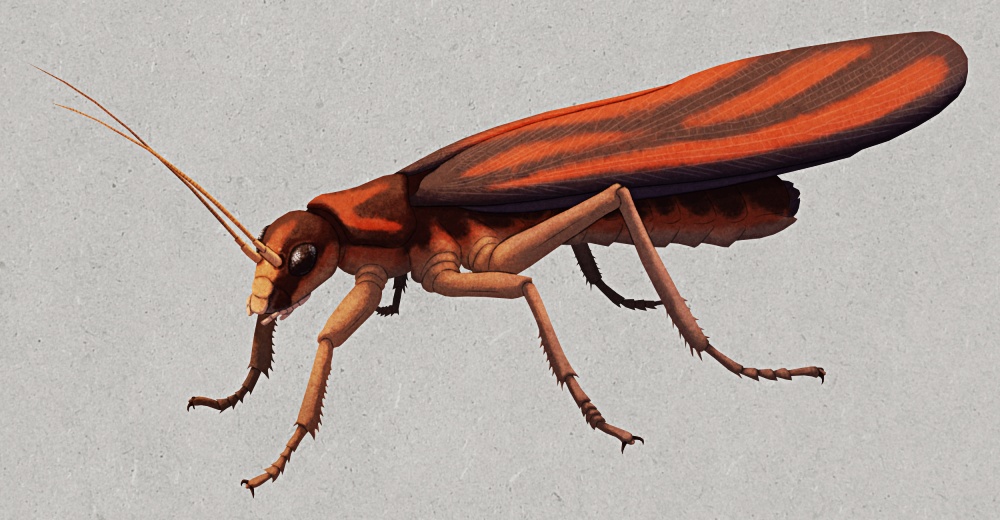Protorthoptera was a group of fossil insects created in the early 20th century to categorize “primitive” neopterans – some of the earliest insects to have evolved the ability to fold their wings down over their backs. Known mostly from just fossilized forewings, they first appeared around 320 million years ago in the late Carboniferous, and after heavy losses during the Great Dying mass extinction they eventually disappeared in the mid-Triassic about 240 million years ago.
And this group was a massive wastebasket taxon.
As early as the mid-20th century the protorthopterans were recognized as being a general taxonomic dumping ground, containing a mixture of early members of multiple different “orthopteroid” insect lineages. But invertebrate paleontologists at the time considered this collection of “primitive” insects to lack enough distinctive features to confidently separate them out from each other, and so the highly paraphyletic grouping continued to be used well into the 1990s.

But in the early 2000s this situation finally changed. Proper cladistic analysis of protorthopteran fossils identified defining features of the wing vein patterns, and many species were reclassified into various lineages within the Archaeorthoptera – which includes modern grasshoppers, crickets, and locusts along with several closely related fossil groups like the titanopterans and caloneurodeans.
“Protorthoptera” is still sometimes used in a loose sense for fossil neopteran insects that still can’t be confidently classified anywhere else, so the wastebasket isn’t entirely cleared here.
And there are some alternate classification systems (mainly proposed by Russian paleontologists) that instead consider many protorthopterans to be notopterans closely related to modern ice-crawlers, and place others as part of other modern neopteran lineages such as webspinners and true bugs.
Hopefully better fossil discoveries and future studies will eventually help clear things up, and give us a better overall picture of the evolution of these insects.
